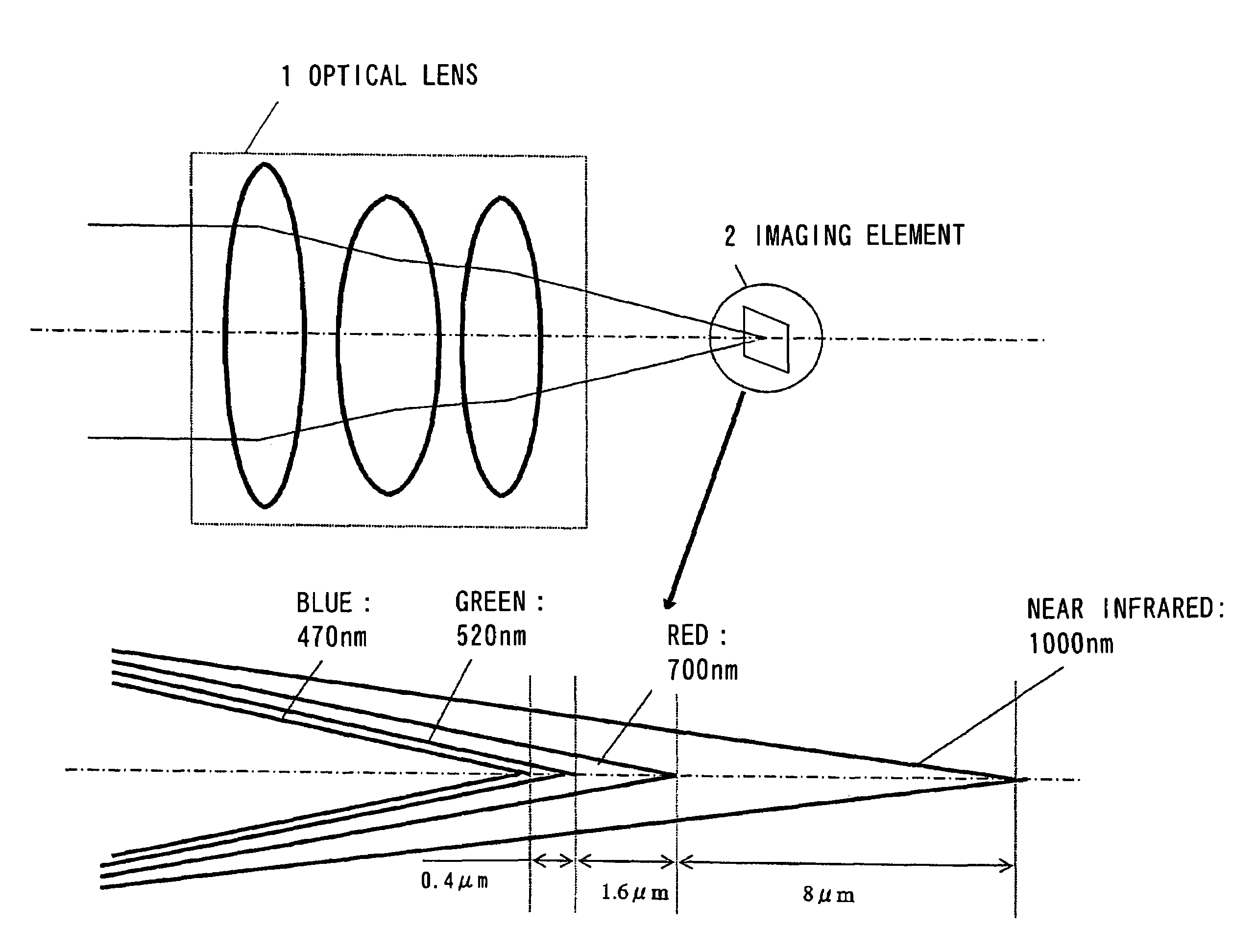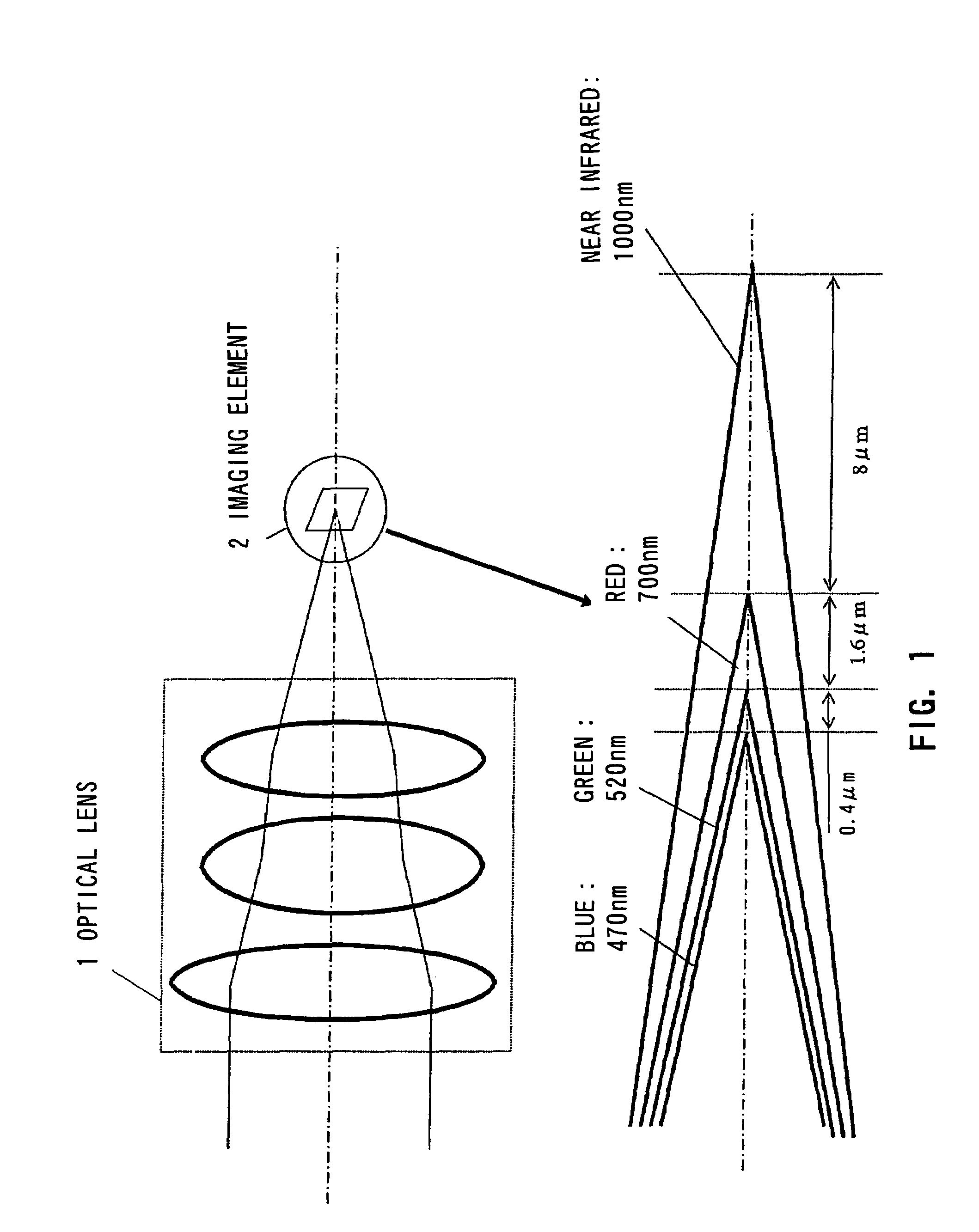Imaging device and an imaging method
a technology of imaging device and image, which is applied in the direction of radiation controlled devices, optical radiation measurement, instruments, etc., can solve the problems of only detecting one color in individual pixels, limit to achromatism, and inability to completely separate light, etc., to achieve clear luminance information or monochrome images, good color reproducibility, and color resolution high
- Summary
- Abstract
- Description
- Claims
- Application Information
AI Technical Summary
Benefits of technology
Problems solved by technology
Method used
Image
Examples
first embodiment
[0041]As shown in FIG. 1, a visible light and near infrared light imaging device related to the invention has an optical lens 1. The optical lens 1 is an optical system whose focal length is variable according to wavelengths, and makes three components of visible light and near infrared light in different wavelength regions form images at different locations according to their wavelengths. The optical lens 1 condenses light from an external subject and forms an image on an imaging element 2. In the lower part of FIG. 1, light pencils from the optical lens 1 are shown separately by different wavelengths. The optical lens 1 forms images at different locations according to wavelengths as described above. This is shown more specifically in FIG. 2. For example, if blue of 470 nm is a focal-point reference A, the focal length of green of 520 nm is 0.4 μm longer than the reference A. Similarly, the focal length of red of 700 nm is 2 μm longer than the reference A, and the focal length of n...
second embodiment
[0058]Next, FIG. 8 shows a configuration of an imaging element related to a second embodiment, and FIG. 9 is an equivalent circuit schematic of an imaging element related to the second embodiment. In the imaging element shown in FIG. 8, a visible light detection section and near infrared light detection section are placed in one pixel. The figure shows one pixel, which comprises a detection section to separate and detect three components of visible light and near infrared light in different wavelength regions, four components in total. In other words, four current detectors 23, 24, 25, and 26 arranged in one pixel detect B, G, and R of visible light and near infrared light. As shown in FIG. 8, an n-type doped region 19 of an n-type semiconductor is formed on a p-type semiconductor substrate 9. Similarly, a p-type doped region 20 is formed thereon. Moreover, an n-type doped region 21 is formed thereon. Furthermore, a p-type doped region 22 is formed thereon. In this way, a four-layer...
PUM
 Login to View More
Login to View More Abstract
Description
Claims
Application Information
 Login to View More
Login to View More - R&D
- Intellectual Property
- Life Sciences
- Materials
- Tech Scout
- Unparalleled Data Quality
- Higher Quality Content
- 60% Fewer Hallucinations
Browse by: Latest US Patents, China's latest patents, Technical Efficacy Thesaurus, Application Domain, Technology Topic, Popular Technical Reports.
© 2025 PatSnap. All rights reserved.Legal|Privacy policy|Modern Slavery Act Transparency Statement|Sitemap|About US| Contact US: help@patsnap.com



